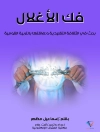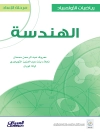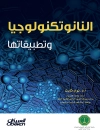Most research on learning tends to occur in silos based onstakeholder perspective. This volume seeks to break down thesesilos and draw together scholars who research learning fromdifferent perspectives to highlight commonalities in learning forstudents, faculty, and institutions. When we understand howlearning is experienced across the institution, we can developstrategies that help support, enhance, and reinforce learning forall.
Exploring what it means to bridge learning across theinstitution, this volume provides a roadmap to improvelearning for all. Both scholarly and practical, it advancesthe knowledge about the ways we investigate and study learningacross and for various groups of learners.
It also:
* Collects thinking about learning in its various formats in onelocation
* Provides a platform for synthesis
* Outlines key questions for thinking more deeply about learningon campus.
Instead of thinking of learning as discrete depending on thestakeholder group, this volume highlights the commonalitiesacross all types of learners.
表中的内容
Part I: Setting the Context
EDITOR’S NOTES 1
Pamela L. Eddy
1. Integration of Learning Model: How College Students Integrate Learning 7
James P. Barber
Knowing how students connect disparate information andmeaningfully synthesize concepts helps us understand how to improvestudent learning.
2. Faculty as Border Crossers: A Study of Fulbright Faculty19
Pamela L. Eddy
Faculty members, as adult learners, incorporate new globalexperiences into their underlying schemas that may ultimatelyresult in transformational learning.
3. Civic Engagement and Organizational Learning Strategies for Student Success 31
Tami L. Moore, Jesse P. Mendez
This chapter focuses on the organizational learning necessary toestablish and maintain institutional supports for postsecondarydegree attainment.
Part II: Examples From Stakeholder Groups
4. ‘Orthogonality’ in Learning and Assessment41
David Leslie
Orthogonality can provide a framework to help clarify whatstakeholders think about learning in college and how we assessoutcomes.
5. Promoting High-Impact Student Learning: Connecting Key Components of the Collegiate Experience 51
Matthew Wawrzynski, Roger Baldwin
This chapter examines the collegiate learning environmentregarding the ways in which high-impact educational practices canhelp students connect their learning.
6. Developing Learning in Faculty: Seeking Expert Assistance From Colleagues 63
Todd Zakrajsek
Interprofessionalism, seeking out advice from other facultymembers in their areas of expertise, aids faculty development andprovides support to faculty.
7. Blended Learning as Transformational Institutional Learning75
Kim Van Der Linden
This chapter presents a case regarding an institution’ssupport of faculty development to institute blended learning andhow these efforts contribute to organizational learning.
Part III: Planning for the Future
8. Constructing an Overarching Framework for Learning–Connecting the Dots 87
Marilyn J. Amey
An integrative organizational framework highlights connectionsbetween learning theories applied at different organizationallevels and how these connections lead to organizationallearning.
9. Finding and Fostering Learning: What College and University Leaders Need to Know and What They Can Do 95
Anna Neumann, Liza Bolitzer
College leaders oversee institutional structures and processesthat ultimately support learning, for students, for faculty, andfor the institution. This chapter provides leaders with strategiesto best support learning.
10. Bringing It All Together Through Group Learning 107
Shannon M. Chance
This chapter provides an outline of key issues for collegeleaders and faculty to consider as they engage in connectinglearning across the institution.
INDEX 121
关于作者
Pamela L. Eddy is a professor of higher education and department chair of Educational Policy, Planning, and Leadership at the College of William & Mary.












